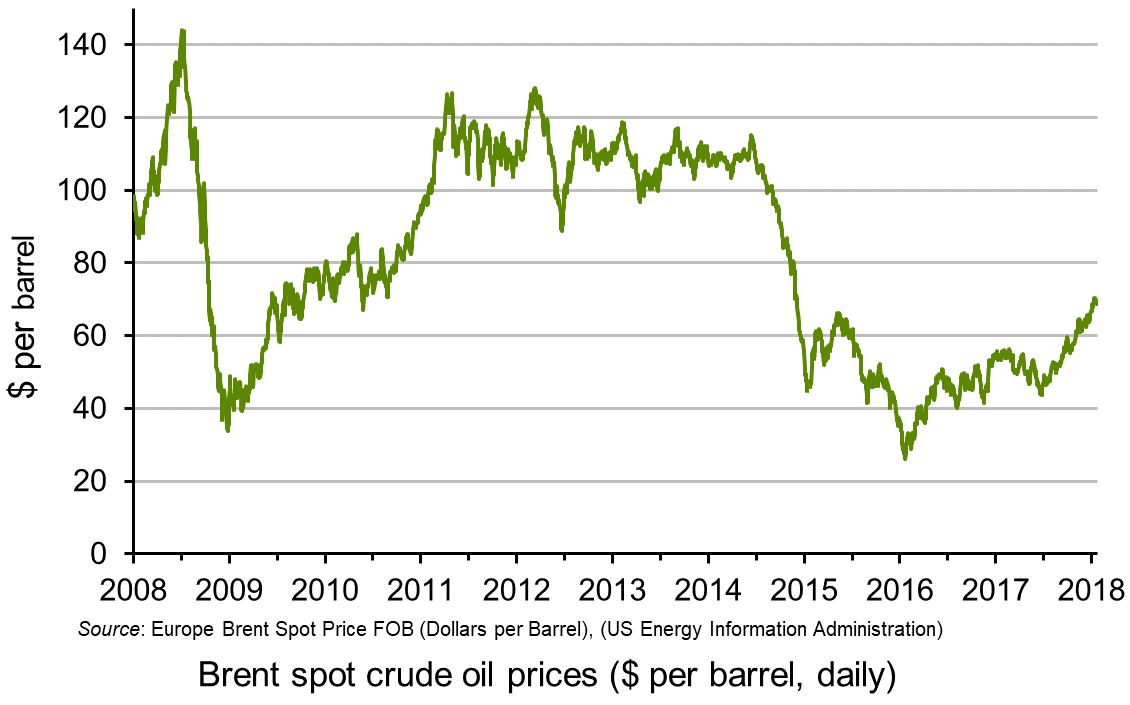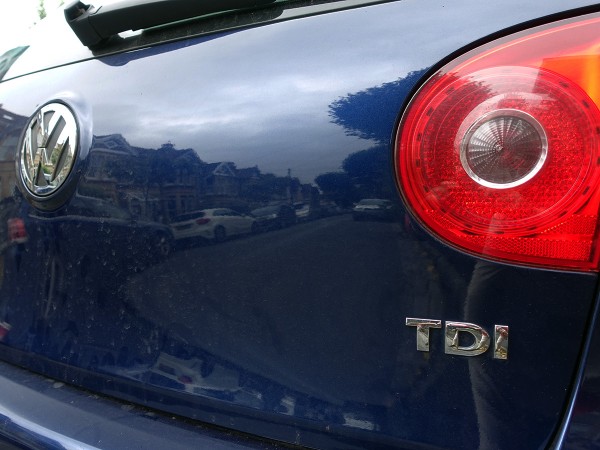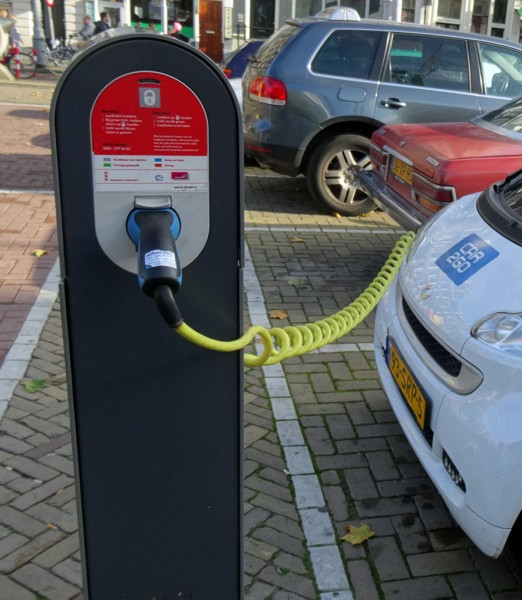 In my previous blog post on this site, I examined how AI-powered pricing tools can act as a ‘double-edged sword’: offering efficiency gains, while also creating opportunities for collusion. I referred to one of the early examples of this, which was the case involving Trod Ltd and GB Eye, where two online poster and frame sellers on Amazon used pricing algorithms to monitor and adjust their prices. However, in this instance there was also an explicit agreement between the firms. As some commentators put it, it was ‘old wine in new bottles‘, meaning a fairly conventional cartel that was simply facilitated through digital tools.
In my previous blog post on this site, I examined how AI-powered pricing tools can act as a ‘double-edged sword’: offering efficiency gains, while also creating opportunities for collusion. I referred to one of the early examples of this, which was the case involving Trod Ltd and GB Eye, where two online poster and frame sellers on Amazon used pricing algorithms to monitor and adjust their prices. However, in this instance there was also an explicit agreement between the firms. As some commentators put it, it was ‘old wine in new bottles‘, meaning a fairly conventional cartel that was simply facilitated through digital tools.
Since then, algorithms have increasingly become part of everyday life and are now embedded in routine business practice.
Some of the effects may have a positive effect on competition. For example, algorithms can help to lower barriers to entry. In some markets, incumbents benefit from long-standing experience, while new firms face significant learning costs and are at a disadvantage. By reducing these learning costs and supporting entry, algorithms could contribute to making collusion harder to sustain.
On the other hand, algorithms could increase the likelihood of collusion. For example, individual algorithms used by competing firms may respond to market conditions in predictable ways, making it easier for firms to collude tacitly over time.
Algorithms can also improve the ability of firms to monitor each other’s prices. This is particularly relevant for multi-product firms. Traditionally, we might expect these markets to be less prone to collusion because co-ordinating across many products is complex. AI can overcome this complexity. In the Sainsbury’s/Asda merger case, for example, the Competition and Markets Authority suggested that the main barrier to reaching and monitoring a pricing agreement was the complexity of pricing across such a wide range of products. However, the CMA also suggested that technological advances could increase its ability to do so in the future.
The ‘hub-and-spoke’ model
 One of the other growing concerns is the ability of AI pricing algorithms to facilitate collusion by acting as a ‘hub’ in a ‘hub-and-spoke’ arrangement. In this type of collusion, competing firms (the ‘spokes’) need not communicate directly with one another. Instead, the ‘hub’ helps them to co-ordinate their actions.
One of the other growing concerns is the ability of AI pricing algorithms to facilitate collusion by acting as a ‘hub’ in a ‘hub-and-spoke’ arrangement. In this type of collusion, competing firms (the ‘spokes’) need not communicate directly with one another. Instead, the ‘hub’ helps them to co-ordinate their actions.
While there have been only limited examples of an AI pricing algorithm acting as a hub in practice, what once seemed to be a largely theoretical concern has now become a live enforcement issue.
A very recent example is the RealPage case in the United States. The Department of Justice (DOJ) filed an antitrust lawsuit against RealPage Inc. in August 2024, alleging that RealPage, acting as the ‘hub’, facilitated collusion between landlords (the ‘spokes’).
RealPage provided pricing software to numerous landlords, including the largest landlord in the USA, which manages around 950 000 rental units across the country. These landlords would normally compete independently in setting rental prices, discounts and lease terms to win consumers. However, by feeding competitively sensitive information that would not usually be shared between rivals into RealPage’s system, the software generated pricing recommendations that, according to the DOJ, led to co-ordinated rent increases across competing apartment complexes.
I n the RealPage case, the authorities reported that they had access to internal documents and statements from the parties involved, which helped support their allegations. These included references within RealPage to helping landlords ‘avoid the race to the bottom’ and comments from a landlord describing the software as ‘classic price fixing’.
n the RealPage case, the authorities reported that they had access to internal documents and statements from the parties involved, which helped support their allegations. These included references within RealPage to helping landlords ‘avoid the race to the bottom’ and comments from a landlord describing the software as ‘classic price fixing’.
Evidence in these cases really matters because the standard of proof required to establish a hub-and-spoke arrangement is much higher than for traditional cases of explicit collusion. This is because it can be difficult to distinguish between legitimate and anti-competitive communication between retailers and suppliers. Also, proving ‘anti-competitive intent’ is inherently challenging.
Other competition authorities around the world are also turning their attention to these issues. For example, the European Commission recently announced that a number of investigations into algorithmic pricing are underway, signalling a clear shift toward more active scrutiny. As technology continues to advance, it is clear that algorithmic pricing will remain an area where both firms and authorities must move and adapt quickly.
Articles
Questions
- In what ways does the RealPage case differ from the earlier Trod Ltd and GB Eye Ltd case? Consider the roles played by the firms, the nature of the alleged co-ordination, and the extent to which pricing algorithms were used to facilitate the conduct.
- How might the use of pricing algorithms affect the likelihood of firms colluding, either explicitly or tacitly? Consider ways that algorithms may make collusion easier to sustain but also ways in which they may reduce its likelihood.
- Should firms be held liable for anti-competitive outcomes produced by algorithms that ‘self-learn’, even if they did not intend those outcomes? Explain why or why not.
 Artificial Intelligence (AI) is transforming the way we live and work, with many of us knowingly or unknowingly using some form of AI daily. Businesses are also adopting AI in increasingly innovative ways. One example of this is the use of pricing algorithms, which use large datasets on market conditions to set prices.
Artificial Intelligence (AI) is transforming the way we live and work, with many of us knowingly or unknowingly using some form of AI daily. Businesses are also adopting AI in increasingly innovative ways. One example of this is the use of pricing algorithms, which use large datasets on market conditions to set prices.
While these tools can drive innovation and efficiency, they can also raise significant competition concerns. Subsequently, competition authorities around the world are dedicating efforts to understanding how businesses are using AI and, importantly, the potential risks its use may pose to competition.
How AI pricing tools can enhance competition
The use of AI pricing tools offers some clear potential efficiencies for firms, with the potential to reduce costs that can potentially translate into lower prices for consumers.
Take, for instance, industries with highly fluctuating demand, such as airlines or hotels. Algorithms can enable businesses to monitor demand and supply in real time and respond more quickly, which could help firms to respond more effectively to changing consumer preferences. Similarly, in industries which have extensive product ranges, like supermarkets, algorithms can significantly reduce costs and save resources that are usually required to manage pricing strategies across a large range of products.
Furthermore, as pricing algorithms can monitor competitors’ prices, firms can more quickly respond to their rivals. This could promote competition by helping prices to reach the competitive level more quickly, to the benefit of consumers.
How AI pricing tools can undermine competition
 However, some of the very features that make algorithms effective can also facilitate anti-competitive behaviour that can harm consumers. In economic terms, collusion occurs when firms co-ordinate their actions to reduce competition, often leading to higher prices. This can happen both explicitly or implicitly. Explicit collusion, commonly referred to as illegal cartels, involves firms agreeing to co-ordinate their prices instead of competing. On the other hand, tacit collusion occurs when firms’ pricing strategies are aligned without a formal agreement.
However, some of the very features that make algorithms effective can also facilitate anti-competitive behaviour that can harm consumers. In economic terms, collusion occurs when firms co-ordinate their actions to reduce competition, often leading to higher prices. This can happen both explicitly or implicitly. Explicit collusion, commonly referred to as illegal cartels, involves firms agreeing to co-ordinate their prices instead of competing. On the other hand, tacit collusion occurs when firms’ pricing strategies are aligned without a formal agreement.
The ability for these algorithms to monitor competitors’ prices and react to changes quickly could work to facilitate collusion, by learning to avoid price wars to maximise long-term profits. This could result in harm to consumers through sustained higher prices.
 Furthermore, there may be additional risks if competitors use the same algorithmic software to set prices. This can facilitate the sharing of confidential information (such as pricing strategies) and, as the algorithms may be able to predict the response of their competitors, can facilitate co-ordination to achieve higher prices to the detriment of consumers.
Furthermore, there may be additional risks if competitors use the same algorithmic software to set prices. This can facilitate the sharing of confidential information (such as pricing strategies) and, as the algorithms may be able to predict the response of their competitors, can facilitate co-ordination to achieve higher prices to the detriment of consumers.
This situation may resemble what is known as a ‘hub and spoke’ cartel, in which competing firms (the ‘spokes’) use the assistance of another firm at a different level of the supply chain (e.g. a buyer or supplier that acts as a ‘hub’) to help them co-ordinate their actions. In this case, a shared artificial pricing tool can act as the ‘hub’ to enable co-ordination amongst the firms, even without any direct communication between the firms.
In 2015 the CMA investigated a cartel involving two companies, Trod Limited and GB Eye Limited, which were selling posters and frames through Amazon (see linked CMA Press release below). These firms used pricing algorithms, similar to those described above, to monitor and adjust their prices, ensuring that neither undercut the other. In this case, there was also an explicit agreement between the two firms to carry out this strategy.
What does this mean for competition policy?
Detecting collusion has always been a significant challenge for the competition authorities, especially when no formal agreement exists between firms. The adoption of algorithmic pricing adds another layer of complexity to detection of cartels and could raise questions about accountability when algorithms inadvertently facilitate collusion.
 In the posters and frames case, the CMA was able to act because one of the firms involved reported the cartel itself. Authorities like the CMA depend heavily on the firms involved to ‘whistle blow’ and report cartel involvement. They incentivise firms to do this through leniency policies that can offer firms reduced penalties or even complete immunity if they provide evidence and co-operate with the investigation. For example, GB eye reported the cartel to the CMA and therefore, under the CMA’s leniency policy, was not fined.
In the posters and frames case, the CMA was able to act because one of the firms involved reported the cartel itself. Authorities like the CMA depend heavily on the firms involved to ‘whistle blow’ and report cartel involvement. They incentivise firms to do this through leniency policies that can offer firms reduced penalties or even complete immunity if they provide evidence and co-operate with the investigation. For example, GB eye reported the cartel to the CMA and therefore, under the CMA’s leniency policy, was not fined.
But it’s not all doom and gloom for competition authorities. Developments in Artificial Intelligence could also open doors to improved detection tools, which may have come a long way since the discussion in a blog on this topic several years ago. Competition Authorities around the world are working diligently to expand their understanding of AI and develop effective regulations for these rapidly evolving markets.
Articles
Questions
- In what types of markets might it be more likely that artificial intelligence can facilitate collusion?
- How could AI pricing tools impact the factors that make collusion more or less sustainable in a market?
- What can competition authorities do to prevent AI-assisted collusion taking place?
 Like most other sectors of the economy, private schools have been significantly affected by the coronavirus pandemic. As with all schools, they have been restricted to providing their pupils with online instruction. In addition, some parents are likely to have seen their ability to pay the high fees private schools charge restricted. As a result of both of these factors, private schools have been forced to look into providing discounts or refunds on their fees. However, the UK competition authority have received evidence that these schools may have been communicating with each other over how they will set these fee reductions. The authority is concerned that this will allow the schools to restrict the discounts and keep their fees higher.
Like most other sectors of the economy, private schools have been significantly affected by the coronavirus pandemic. As with all schools, they have been restricted to providing their pupils with online instruction. In addition, some parents are likely to have seen their ability to pay the high fees private schools charge restricted. As a result of both of these factors, private schools have been forced to look into providing discounts or refunds on their fees. However, the UK competition authority have received evidence that these schools may have been communicating with each other over how they will set these fee reductions. The authority is concerned that this will allow the schools to restrict the discounts and keep their fees higher.
In other markets (see here and here) the competition authorities have been prepared to relax certain elements of competition law in light of the coronavirus situation. However, price fixing is the severest breach of competition law and the Competition and Markets Authority (CMA) has been clear that this continues to be the case in the current climate. A CMA spokesperson said:
Where cooperation amongst businesses or other organisations is necessary to protect consumers in the coronavirus outbreak, the CMA will not take enforcement action. But we will not tolerate organisations agreeing prices or exchanging commercially sensitive information on future pricing or business strategies with their competitors, where this is not necessary to meet the needs of the current situation.
Therefore, the CMA has written to the Independent Schools Council and other bodies representing the private school sector. This letter made clear that communicating over the fee reductions would be very likely to breach competition law and could result in fines being imposed.

This warning is important since the sector has a history of illegal communication between schools. In 2006 the Office of Fair Trading (OFT) (one of the predecessors to the CMA) imposed fines when it discovered that 50 of them, including Eton and Harrow, had for a number of years shared information on the fees they intended to charge. The OFT discovered that this had taken place following evidence obtained by a student who hacked into their school’s computer system. Here the student found information on the intended fees of competitor schools and leaked this information to the press. It is clear that the CMA will keep a close eye on private schools as they react to the ongoing pandemic.
Articles
Questions
- What are the key features of the private school sector? Is this a market where you would expect competition to be intense?
- Why is price fixing the severest breach of competition law?
- Assuming communication between the private schools is eradicated, how would you expect the sector to be affected by the coronavirus pandemic?
 OPEC, for some time, was struggling to control oil prices. Faced with competition from the fracking of shale oil in the USA, from oil sands in Canada and from deep water and conventional production by non-OPEC producers, its market power had diminished. OPEC now accounts for only around 40% of world oil production. How could a ‘cartel’ operate under such conditions?
OPEC, for some time, was struggling to control oil prices. Faced with competition from the fracking of shale oil in the USA, from oil sands in Canada and from deep water and conventional production by non-OPEC producers, its market power had diminished. OPEC now accounts for only around 40% of world oil production. How could a ‘cartel’ operate under such conditions?
One solution was attempted in 2014 and 2015. Faced with plunging oil prices which resulted largely from the huge increase in the supply of shale oil, OPEC refused to cut its output and even increased it slightly. The aim was to keep prices low and to drive down investment in alternative sources, especially in shale oil wells, many of which would not be profitable in the long term at such prices.
In late 2016, OPEC changed tack. It introduced its first cut in production since 2008. In September it introduced a new quota for its members that would cut OPEC production by 1.2 million barrels per day. At the time, Brent crude oil price was around $46 per barrel.
In December 2016, it also negotiated an agreement with non-OPEC producers, and most significantly Russia, that they would also cut production, giving a total cut of 1.8 million barrels per day. This amounted to around 2% of global production. In March 2017, it was agreed to extend the cuts for the rest of the year and in November 2017 it was agreed to extend them until the end of 2018.
With stronger global economic growth in 2017 and into 2018 resulting in a growth in demand for oil, and with OPEC and Russia cutting back production, oil prices rose rapidly again (see chart: click here for a PowerPoint). By January 2018, the Brent crude price had risen to around $70 per barrel.

Low oil prices had had the effect of cutting investment in shale oil wells and other sources and reducing production from those existing ones which were now unprofitable. The question being asked today is to what extent oil production from the USA, Canada, the North Sea, etc. will increase now that oil is trading at around $70 per barrel – a price, if sustained, that would make investment in many shale and other sources profitable again, especially as costs of extracting shale oil is falling as fracking technology improves. US production since mid-2016 has already risen by 16% to nearly 10 million barrels per day. Costs are also falling for oil sand and deep water extraction.
In late January 2018, Saudi Arabia claimed that co-operation between oil producers to limit production would continue beyond 2018. Shale oil producers in the USA are likely to be cheered by this news – unless, that is, Saudi Arabia and the other OPEC and non-OPEC countries party to the agreement change their minds.
Videos
 OPEC’s Control of the Oil Market Is Running on Fumes Bloomberg (21/12/17)
OPEC’s Control of the Oil Market Is Running on Fumes Bloomberg (21/12/17)
 Oil Reaches $70 a Barrel for First Time in Three Years Bloomberg, Stuart Wallace (11/1/18)
Oil Reaches $70 a Barrel for First Time in Three Years Bloomberg, Stuart Wallace (11/1/18)
 Banks Increasingly Think OPEC Will End Supply Cuts as Oil Hits $70 Bloomberg, Grant Smith (15/1/18)
Banks Increasingly Think OPEC Will End Supply Cuts as Oil Hits $70 Bloomberg, Grant Smith (15/1/18)
Articles
Oil prices rise to hit four-year high of $70 a barrel BBC News (11/1/18)
Overshooting? Oil hits highest level in almost three years, with Brent nearing $70 Financial Times, Anjli Raval (10/1/18)
Can The Oil Price Rally Continue? OilPrice, Nick Cunningham (14/1/18)
Will This Cause An Oil Price Reversal? OilPrice, Olgu Okumus (22/1/18)
The world is not awash in oil yet
Arab News, Wael Mahdi (14/1/15)
‘Explosive’ U.S. oil output growth seen outpacing Saudis, Russia CBC News (19/1/18)
Oil’s Big Two seeking smooth exit from cuts The Business Times (23/1/18)
Saudi comments push oil prices higher BusinessDay, Henning Gloystein (22/1/18)
Report
Short-term Energy Outlook U.S. Energy Information Administration (EIA) (9/1/18)
Questions
- Using supply and demand diagrams, illustrate what has happened to oil prices and production over the past five years. What assumptions have you made about the price elasticity of supply and demand in your analysis?
- If the oil price is above the level at which it is profitable to invest in new shale oil wells, would it be in the long-term interests of shale oil companies to make such investments?
- Is the structure of the oil industry likely to result in long-term cycles in oil prices? Explain why or why not.
- Investigate the level of output from, and investment in, shale oil wells over the past three years. Explain what has happened.
- Would it be in the interests of US producers to make an agreement with OPEC on production quotas? What would prevent them from doing so?
- What is likely to happen to oil prices over the coming 12 months? What assumptions have you made and how have they affected your answer?
- If the short-term marginal costs of operating shale oil wells is relatively low (say, below $35 per barrel) but the long-term marginal cost (taking into account the costs of investing in new wells) is relatively high (say, over $65 per barrel) and if the life of a well is, say, 5 years, how is this likely to affect the pattern of prices and output over a ten-year period? What assumptions have you made and how do they affect your answer?
- If oil production from countries not party to the agreement between OPEC and non-OPEC members increases rapidly and if, as a result, oil prices start to fall again, what would it be in OPEC’s best interests to do?
 The car industry has featured heavily in the news in recent weeks with the announcement of plans to ban the sale of new petrol and diesel cars in the UK from 2040. Around the same time, news broke that the European Commission had commenced an investigation into potential collusive behaviour between German car makers.
The car industry has featured heavily in the news in recent weeks with the announcement of plans to ban the sale of new petrol and diesel cars in the UK from 2040. Around the same time, news broke that the European Commission had commenced an investigation into potential collusive behaviour between German car makers.
Since the investigation is ongoing, it is not yet clear exactly what the firms are accused of. However, allegations first published in German magazine Der Spiegel claim that since at least the mid 1990s Volkswagen (and subsidiaries Porsche and Audi), Daimler (owner of Mercedes-Benz) and BMW met several times a year. Furthermore, it is alleged the meetings aimed to give the firms an advantage over overseas rivals by:
co-ordinating the development of their vehicles, costs, suppliers and markets for many years, at least since the Nineties, to the present day.
In particular, Der Spiegel claims that the cartel limited the size of the tanks that manufacturers install in cars to hold chemicals that reduce diesel emissions. Smaller tanks then left more room for the car’s sound system.
Limiting the size of these tanks should be seen in the context of the 2015 emissions scandal where it became clear that Volkswagen had programmed its cars to limit the use of these chemicals and cheated in emissions tests. This meant that 11 million cars worldwide produced excess emissions. Whilst other manufacturers have suggested that the cars they produced may also produce excess emissions, Volkswagen has so far been the only firm to admit to breaking the rules so explicitly. However, if the allegations in Der Spiegel turn out to be true, there will be clear evidence that the harm caused was widespread and that illegal communication between firms played a key role in facilitating this. If found guilty, substantial fines will be imposed by the European Commission and several of the firms have already announced plans to put in place measures to reduce emissions.
It is not clear how the competition authorities discovered the cartel. However, it has been suggested  that incriminating documents were uncovered during a raid of Volkswagen’s offices as part of an investigation into a separate steel cartel. It seems that Volkswagen and Daimler are now cooperating with the investigation, presumably hoping to reduce the penalties they could face. It has also been reported that Daimler’s role in the investigation will have serious implications for future cooperation with BMW, including a project to develop charging sites for electric cars. It will be extremely interesting to see what the investigation uncovers and what the future ramifications for the car industry are.
that incriminating documents were uncovered during a raid of Volkswagen’s offices as part of an investigation into a separate steel cartel. It seems that Volkswagen and Daimler are now cooperating with the investigation, presumably hoping to reduce the penalties they could face. It has also been reported that Daimler’s role in the investigation will have serious implications for future cooperation with BMW, including a project to develop charging sites for electric cars. It will be extremely interesting to see what the investigation uncovers and what the future ramifications for the car industry are.
Articles
European officials probe claims of huge German car cartel CNN Money, Mark Thompson (23/7/17)
Automotive corruption: German manufacturer collusion could spell bankruptcy Shout out UK, Christopher Sharp (4/8/17)
Germany’s auto industry is built on collusion Bloomberg, Leonid Bershidsky (31/7/17)
BMW reassured top staff about cartel allegations: sources Reuters, Edward Taylor (4/8/17)
Questions
- What are the consequences of the coordination between German car makers likely to have been for consumers? What about for rival car manufacturers?
- Are there circumstances in which coordination between car makers might be beneficial for society?
- How do you think the German car industry will be affected by these allegations going forward?
 In my previous blog post on this site, I examined how AI-powered pricing tools can act as a ‘double-edged sword’: offering efficiency gains, while also creating opportunities for collusion. I referred to one of the early examples of this, which was the case involving Trod Ltd and GB Eye, where two online poster and frame sellers on Amazon used pricing algorithms to monitor and adjust their prices. However, in this instance there was also an explicit agreement between the firms. As some commentators put it, it was ‘old wine in new bottles‘, meaning a fairly conventional cartel that was simply facilitated through digital tools.
In my previous blog post on this site, I examined how AI-powered pricing tools can act as a ‘double-edged sword’: offering efficiency gains, while also creating opportunities for collusion. I referred to one of the early examples of this, which was the case involving Trod Ltd and GB Eye, where two online poster and frame sellers on Amazon used pricing algorithms to monitor and adjust their prices. However, in this instance there was also an explicit agreement between the firms. As some commentators put it, it was ‘old wine in new bottles‘, meaning a fairly conventional cartel that was simply facilitated through digital tools. One of the other growing concerns is the ability of AI pricing algorithms to facilitate collusion by acting as a ‘hub’ in a ‘hub-and-spoke’ arrangement. In this type of collusion, competing firms (the ‘spokes’) need not communicate directly with one another. Instead, the ‘hub’ helps them to co-ordinate their actions.
One of the other growing concerns is the ability of AI pricing algorithms to facilitate collusion by acting as a ‘hub’ in a ‘hub-and-spoke’ arrangement. In this type of collusion, competing firms (the ‘spokes’) need not communicate directly with one another. Instead, the ‘hub’ helps them to co-ordinate their actions. n the RealPage case, the authorities reported that they had access to internal documents and statements from the parties involved, which helped support their allegations. These included references within RealPage to helping landlords ‘avoid the race to the bottom’ and comments from a landlord describing the software as ‘classic price fixing’.
n the RealPage case, the authorities reported that they had access to internal documents and statements from the parties involved, which helped support their allegations. These included references within RealPage to helping landlords ‘avoid the race to the bottom’ and comments from a landlord describing the software as ‘classic price fixing’.  Artificial Intelligence (AI) is transforming the way we live and work, with many of us knowingly or unknowingly using some form of AI daily. Businesses are also adopting AI in increasingly innovative ways. One example of this is the use of pricing algorithms, which use large datasets on market conditions to set prices.
Artificial Intelligence (AI) is transforming the way we live and work, with many of us knowingly or unknowingly using some form of AI daily. Businesses are also adopting AI in increasingly innovative ways. One example of this is the use of pricing algorithms, which use large datasets on market conditions to set prices. In the posters and frames case, the CMA was able to act because one of the firms involved reported the cartel itself. Authorities like the CMA depend heavily on the firms involved to ‘whistle blow’ and report cartel involvement. They incentivise firms to do this through leniency policies that can offer firms reduced penalties or even complete immunity if they provide evidence and co-operate with the investigation. For example, GB eye reported the cartel to the CMA and therefore, under the CMA’s leniency policy, was not fined.
In the posters and frames case, the CMA was able to act because one of the firms involved reported the cartel itself. Authorities like the CMA depend heavily on the firms involved to ‘whistle blow’ and report cartel involvement. They incentivise firms to do this through leniency policies that can offer firms reduced penalties or even complete immunity if they provide evidence and co-operate with the investigation. For example, GB eye reported the cartel to the CMA and therefore, under the CMA’s leniency policy, was not fined.  Like most other sectors of the economy, private schools have been significantly affected by the coronavirus pandemic. As with all schools, they have been restricted to providing their pupils with online instruction. In addition, some parents are likely to have seen their ability to pay the high fees private schools charge restricted. As a result of both of these factors, private schools have been forced to look into providing discounts or refunds on their fees. However, the UK competition authority have
Like most other sectors of the economy, private schools have been significantly affected by the coronavirus pandemic. As with all schools, they have been restricted to providing their pupils with online instruction. In addition, some parents are likely to have seen their ability to pay the high fees private schools charge restricted. As a result of both of these factors, private schools have been forced to look into providing discounts or refunds on their fees. However, the UK competition authority have 




